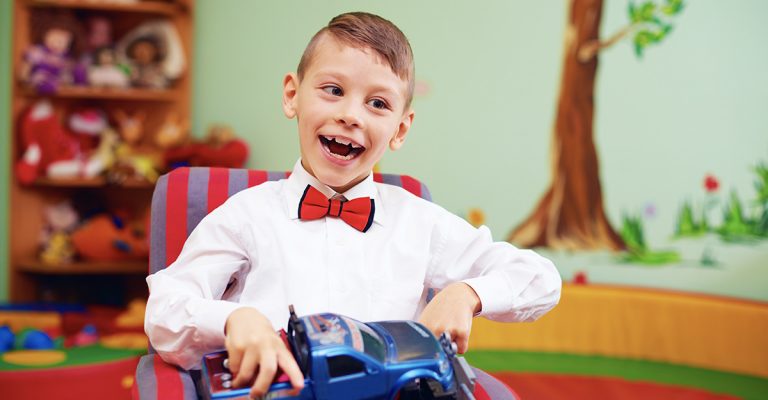Cerebral palsy and epilepsy aren’t the same diseases and often wander together owing to high damage that is imparted to cerebral function. In fact, 25% of all children with cerebral palsy also have to deal with epilepsy.
However, this opens the way to another confused symptom: involuntary movements and spasms that the person considers to be convulsions. Therefore, there is much importance for one to understand that and how you can manage it.
What Are Seizures?
The Epilepsy Foundation illustrates that a seizure is a sudden change in behavior brought by changes in the electric activity inside the brain. It may take the form of a brief, almost imperceptible moment or affect the body for a longer duration as a person may show weird movements or even fail to become aware, otherwise known as the loss or alteration of perception. This is attributed to a change in the chemical structure of the nerve cell.
No one may consider himself immune from a seizure; they can strike practically everyone at practically any age, regardless of the prevailing condition of their health. The causes of seizure are found to be diverse.
For instance, a young child can experience a seizure because of the high temperature while alternating conditions some might suffer from a seizure simply because being exposed to some harmful substance. Other reasons might include imbalances in the body’s metabolism or electrolyte levels, or injuries to the brain.
Since certain parts in the brain are already compromised, this is often referred to as a seizure disorder. Cerebral palsy children are prone to having a certain kind of seizure disorder called epilepsy.

Identifying Seizure Symptoms
For instance, a victim may be prone to an array of seizures, where one fully experiences them first-handedly under two categories: generalized and focal seizures.
A generalized seizure typically involves the entire brain and may be more intense, hence, more serious than a partial seizure, which could be confined just to the hemisphere of the brain.
Notable symptoms of a seizure are:
- Falling unconscious
- Consistent rhythmic shaking
- Muscular relaxation
- Stiffness
- Tiny, rapid movements
- Sudden, uncontrolled muscular contractions
- A vacant stare
- Abnormal eye movements
- Confusion
One of the problems is that it is quite hard for people to correctly identify what kind of seizure they are having. Because diagnosis is greatly hinged most often on observatory reports given, family and friends have to detail vividly exactly what happens when one has a seizure event.
Connection between Cerebral Palsy and Epilepsy
Epilepsy is not automatically the case for children with seizures. It is a disorder whereby a person has repeated sudden brief and temporary changes in brain functions, which is caused by the sudden change in electrical activities in the brain, temporarily related to its function.
Cerebral palsy is impairment which attacks the movement and is induced by an injury at the brain while in the developmental stage. This kind of impairment, cerebral palsy, leads to brain destruction, which is responsible in cases of seizures caused by the breakdown of electrical links in the brain cells.
Both cerebral palsy and epilepsy could be caused by events such as:
- Complications during birth
- Insufficient oxygen supply to the brain
- Suffering a stroke
- Major head injuries
- Infections in the brain
However, the two conditions may not cause each other. The cerebral palsy and epilepsy are separate conditions that could exist in co-morbidity due to direct result of severe in this case- brain damage.
Link Between Cerebral Palsy Types and Seizures
The kind of cerebral palsy (CP) a person has might make them more vulnerable to seizures.
For instance, persons with spastic quadriplegia are almost certain to suffer from seizures, even though rhizotomy work does not cut the possibility of surgery down to one-third. This would mostly be encompassed by the fact that the more serious the cerebral palsy (like spastic quadriplegia is more serious than spastic monoplegia, which only affects one arm), the more damage that is caused to the brain.
Further to that, research shows that those with spastic quadriplegia are closely followed by spastic hemiplegia; it suggests that those with spastic diplegia are not well explained by this and are less evident in children with dyskinetic or ataxic cerebral palsy, and hardly seen in the hyperkinetic and ataxic group.
Let’s simplify these different types of CP:
- Spastic quadriplegia causes high muscle rigidity in all 4 limbs
- Spastic hemiplegia results in muscle stiffness on one side of the body (either left or right)
- Spastic diplegia primarily causes rigidity in the legs
- Dyskinetic cerebral palsy triggers uncontrolled contortions or squirming
- Ataxic cerebral palsy results in weak balance and coordination
Motor problems are very common in cerebral palsy, often taken for a seizure. For example, in extreme rigidity or spasticity, it is not really a seizure, and sometimes it is underrated. Such information helps to understand further what kind of relationship is existing between cerebral palsy and seizures.
Seizures are involuntary alterations in motor functioning that arise from uncommon electrical activity in the brain, causing alterations not only in movement but also in affective and awareness changes.
Cerebral palsy is poorly understood; it is associated with an increased risk of developing seizure activity. However, the development of seizures at this time is considered to be a risk factor that is connected to damage or structural malformation of the brain from CP.
Steps to Take If a Person with Cerebral Palsy Experiences a Seizure

Here is what you can do if you see a person with cerebral palsy and seizure co-existing.
Step 1: Stay Calm and Ensure Safety
In case a person with cerebral palsy has a seizure indeed: remain very calm. Panic will make you make very poor judgment. First of all, make sure that the person having a seizure is safe.
Remove any hard or jack objects from around them, which might injure them in the course of a seizure. Do not try to hold them down while trying to stop any violent jerking. Some soft item can be placed under their head just in case they are hurt from having the uncontrolled motion.
Step 2: Pay Attention to the Details
Seizures can be very frightening. However, do note exactly what happened. Watch the patient day and night, and write down how long the seizure lasted. Write down the symptoms. Was there a jerking of the body?
Was the individual aware of what was happening when the seizure occurred? All of these are details the doctors ask about later in such situations. Then, you could write it all down that you observed, to share it with their health care provider.
Step 3: Do Not Interrupt the Seizure
Virtually part of the will to act instinctively, a strong, irresistible impulse drives to do what contradicts all common sense—yet it is not safe to interfere with this attack. Never put anything in the person’s mouth while they are seizing; this could make them choke or even hurt their mouth and teeth. Lay them on one side to help keep an open airway and protect from choking should they vomit.
Step 4: Seek Medical Help
Conduct a post-seizure infection on the participant. Recommend their immediate evaluation if the seizure grounds for concern that the participant sustains a serious injury, including a seizure that lasts longer than 5 minutes or if another seizure rapidly follows the first. Even then, you should contact the healthcare provider about the incident. They may need to revise the treatment plan for the affected person.
Step 5: Provide Aftercare and Support
After the end of a seizure, life continues to be wholly changed for the person who has experienced it. For just a moment, it might become tiring or confusing for them. After they have a seizure, give them an opportunity to relax and regain their strength. Make them feel that they are supported, and secure.
They may not remember what occurred, so explain it to them gently. Above all, how they feel about the experience is important too, as it might be a frightening event for them. So, just being understanding and patient can have a great impact on their recovery.
Managing Epilepsy in Kids with Cerebral Palsy
It is possible to reduce the incidence of such episodes of uncontrolled brain electrical activity for children with cerebral palsy. Let’s talk about how each of these paths made this happen.
Medication Management
Daily medicine is the most certain treatment for epilepsy. In most children with Cerebral Palsy, such medicines almost completely alleviate or almost completely stop seizures. Every child has a different condition, and so every child has a special medicine plan.
The doctor will choose the very best medicines according to the condition or type of seizures, to how often your child has them. The medications absolutely, must be taken exactly as prescribed in order to work. If missed, or stopped, they tend to make it more likely for a seizure to occur.
Surgery and Devices
Sometimes, when nothing else helps, your child may be eligible to have the help of a neurologist who will remove the part of his or her brain where the seizures start from. It might sound scary, but, in general, it will lessen the amount of seizing and there are only small risks involved.
Sometimes, the mechanism of a Vagus Nerve Stimulator (VNS) can help—the device sends mild signals to the brain to stop seizures. Again, the best falls with the lady who is in charge of your child’s brain activity—his neurologist.
Dietary Adjustments
The Ketogenic Diet is a specially designed high-fat, low-carb diet helpful for some children with epilepsy. It may also help to control the incidence of seizure in some children having Cerebral Palsy. This diet is specialized and is to be followed strictly under doctor’s guidance.
Education and Emotional Support
The emotional overwhelming in relation to the condition about epilepsy can be very overwhelming. Most of the times, the condition makes children feel different and let out due to the condition.
They need the emotional support from the family and friends. Counseling and support groups can be of great help. Education can also help such children know about the condition. This gives hope, therefore reducing the fear attached to the condition.
Bottomline
Every child is a miracle: so he or she is treated. Work with the best doctor, who understands well or good enough the unique needs of your child. Through proper intervention and support, kids with Cerebral Palsy and epilepsy will grow and live normally.

